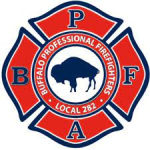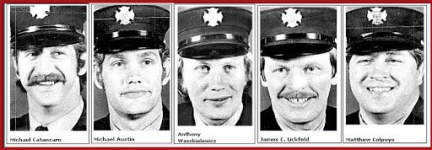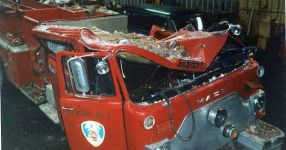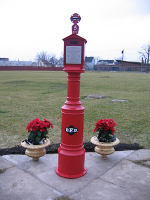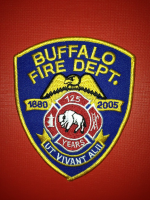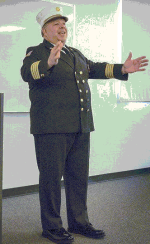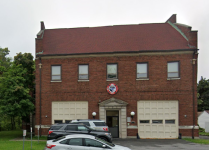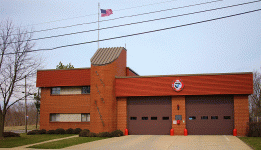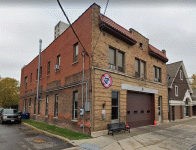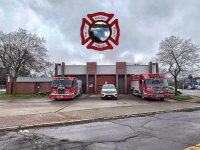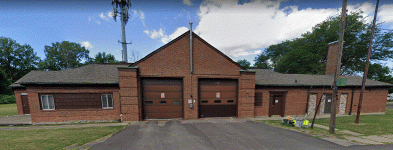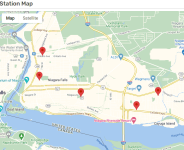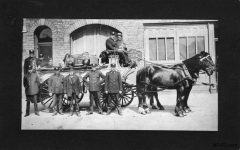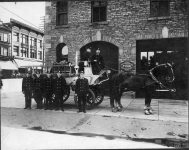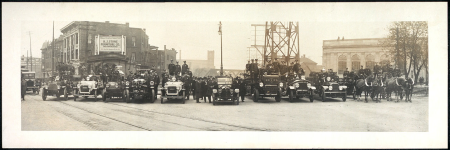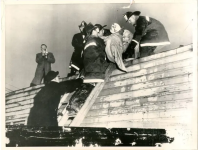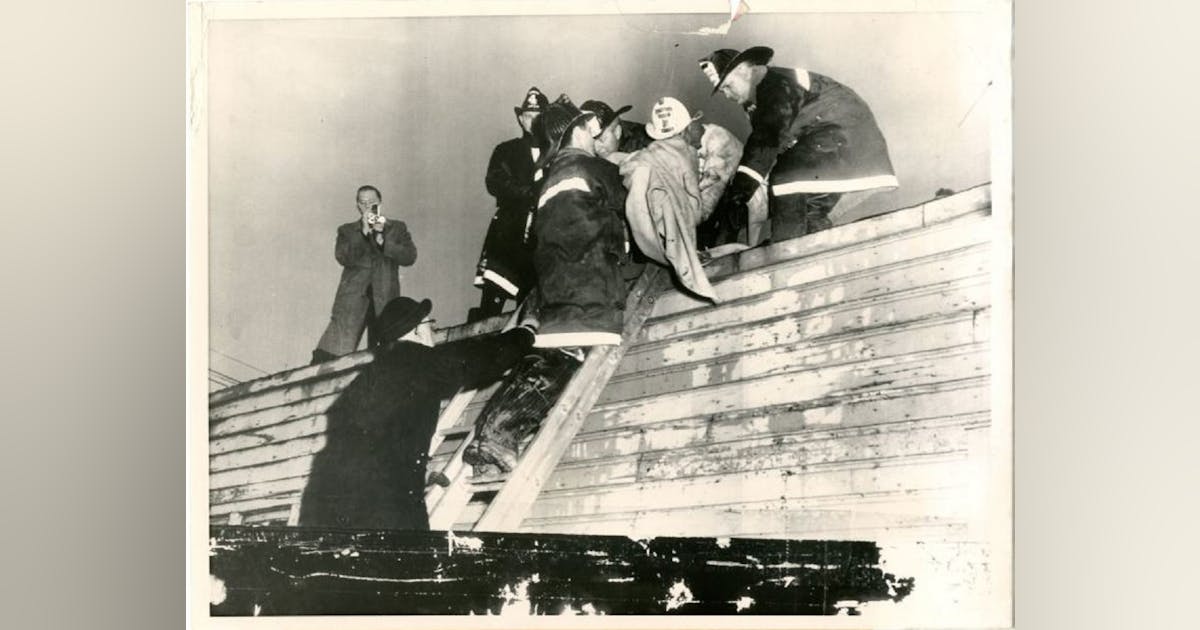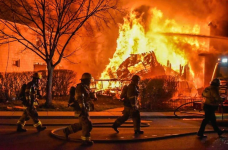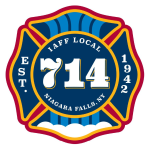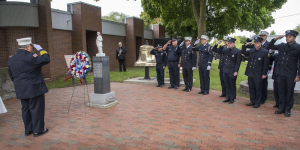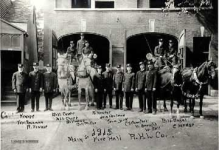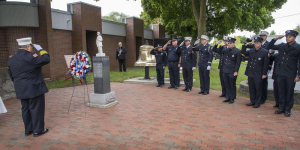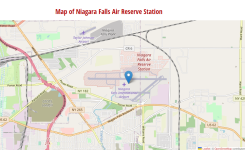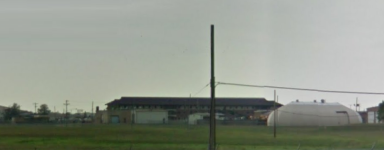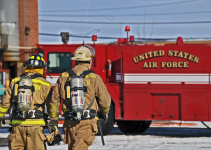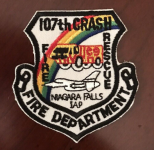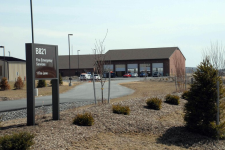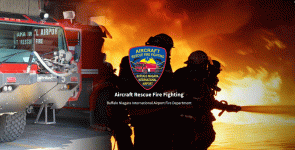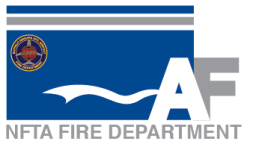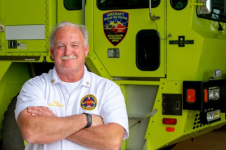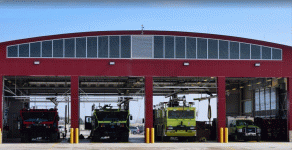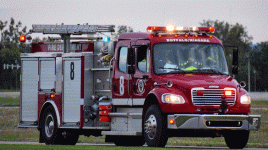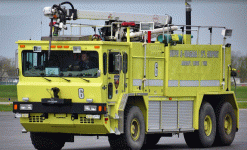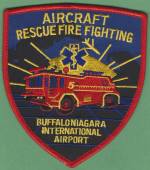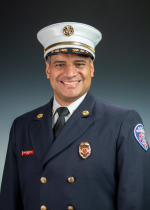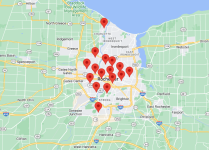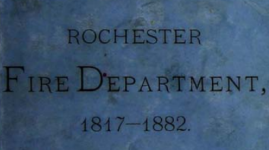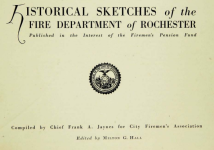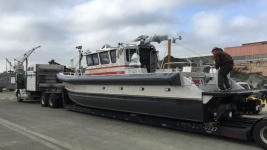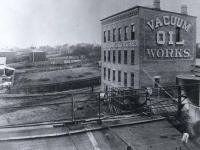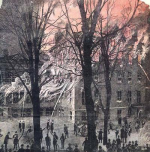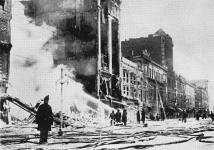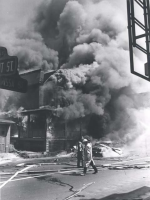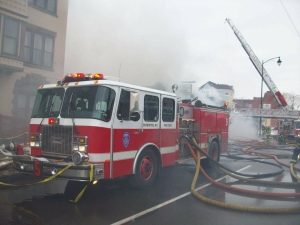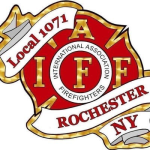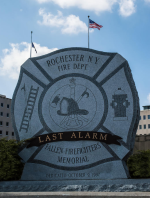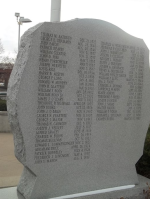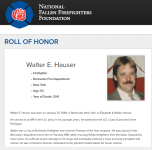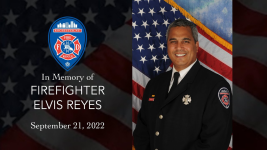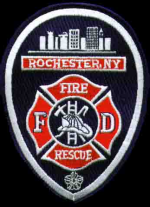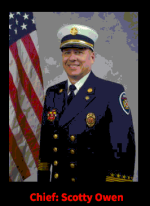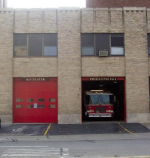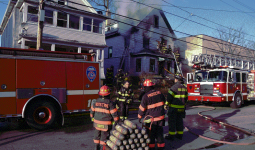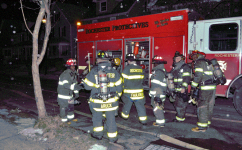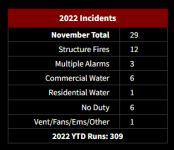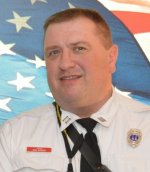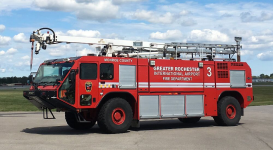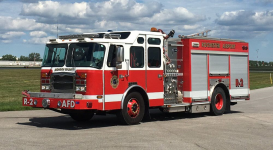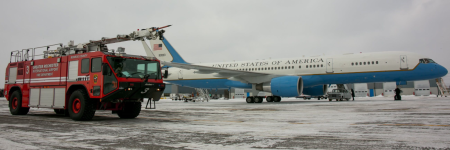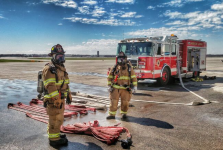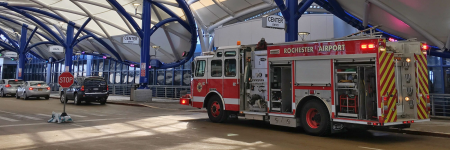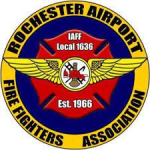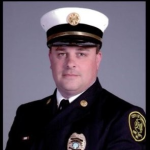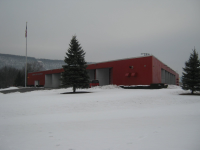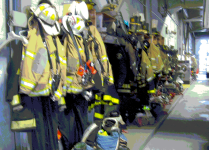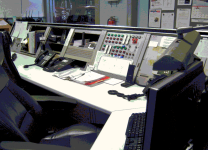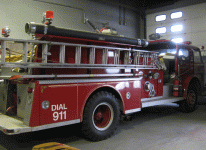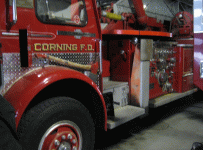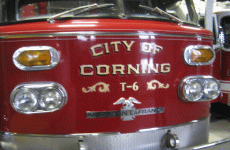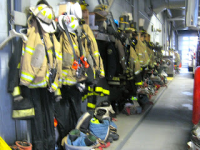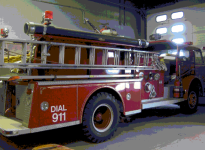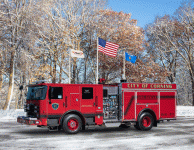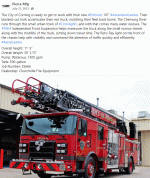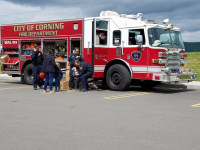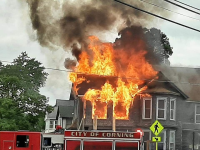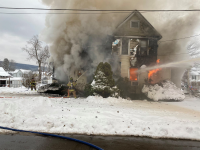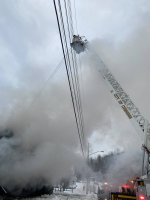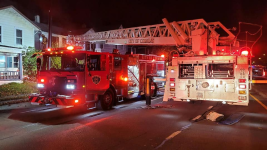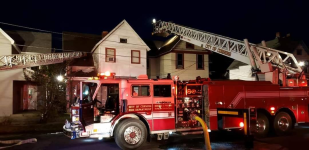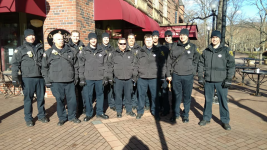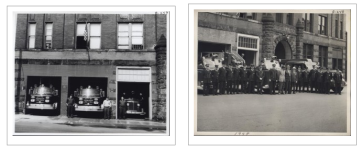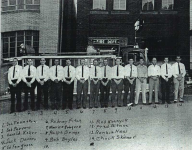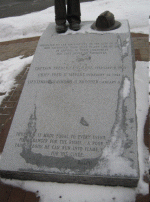BUFFALO FIRE DEPARTMENT
The Buffalo Fire Department responds on average to 30,000 calls a year. General call types include fire, EMS, and hazardous materials incidents. The Buffalo Fire Department also has mutual aid plans with many local municipalities as well as Canadian fire agencies. For FY' 2005-2006, the BFD responded to 9,844 fire alarm activations, 1,483 confirmed working fires, and 23,543 EMS calls. The call volume has increased since. EMS calls are the most frequent calls the BFD respond to. In its current capacity, the Buffalo Fire Department acts as a first responder only. The BFD responds to mostly "life threatening" squad calls. Calls such as cardiac arrest, respiratory arrest/distress, chest pain, maternity, MVA's, medical alarms, etc. Most Buffalo firefighters are trained to the certified first responder level (CFR-D) while many others are Emergency Medical Technicians (EMT-B). There are a handful of Buffalo firefighters that are Intermediates (AEMT-I) and Paramedics (AEMT-P), however due to state protocols they can not render services higher than their agency level, which is Basic Life Support (BLS). The department does not transport patients to hospitals. This is done by Rural Metro Medical Services, a commercial service. Ambulances are dispatched by ADI (Ambulance Dispatch & Inspection), which work hand in hand with the fire department. Ambulances are dispatched to all alarms of fire as well as Level 1 Hazmat responses. Also the Erie County S.M.A.R.T. (Specialized Medical Assistance Response Team) aids the fire department on bus accident calls, MCI's, and Hazardous Materials Incidents. S.M.A.R.T. is staffed by ER doctors from the Erie County Medical Center which allows for quick MD access to patients. The Buffalo Fire Department has been looking again into providing their own ambulance service as well as implementing a revamped Squad company that would be an ALS flycar to assist the commercial ambulance service at peak times, but so far those talks are preliminary.
Hazmat calls are specialized responses handled by specific crews in the BFD. The crew of Engine 3, where Hazmat 1 is now quartered, mans the specialized truck on all Level 1 Hazmat Responses as well as simple spill calls. If Engine 3 is unavailable, the crew of Rescue 1 will respond with Hazmat 1. The Buffalo Fire Department also responds to Hazmat calls for the Town of Elma which is in the eastern suburbs. Elma, home to companies such as Motorola, Moog, signed a contract a couple of years ago with the City of Buffalo to provide Hazmat response in the event of an emergency.
Buffalo on average battles a structure fire once a day. The city is heavily laden with wooden balloon style framed buildings, multiple vacant warehouses and industrial buildings. In some cases these structures are just inches apart and since many are vacant they are very attractive for career arsonists and the wannabe firebug. The city has begun a process to demolish the over 10,000 vacant structures in an effort to detract arsons and keep firefighters safe. Also, the city in conjunction with several city departments has begun marking vacant structures with a uniformed system. Any structure that has a red square on it means an interior attack, if needed, is safe to enter. However structures with a red square with an X mean that the structure is unsafe and an interior attack is ill advised and only an exterior attack is warranted.
Buffalo's Arson Investigation Unit is one of the busiest arson squads in the country. Buffalo's Fire Marshals are armed firefighters invested with the powers of arrest. They respond to all structure fires when requested by the command officer as well as investigate small fires to assert if it was truly accidental or an arson was committed. Buffalo has a high rate of arsons due to the over 10,000 vacant structures within the city limits. They were quartered out of Engine 20 (Fireboat) on Ohio Street for years but recently have moved into Engine 2's quarters at Elmwood and Virginia allowing more room for staff as well as quarters for some of their apparatus. Also the Arson Squad has increased its arrests in the last few years.
The BFD has seen much restructuring within the ranks during the past decades with the population in the city dwindling from a high of 600,000 in the 1950s to less than 292,000 in 2006. Since 1994 alone, the Fire Department has disbanded six engine companies (10,13,16,18,24 & 30), four ladder companies (1,9,11 & 12), and a heavy rescue company (2).
However, the Fire Department still utilizes some of its closed firehouses. Engine 18 (Annex 18) on Fillmore Avenue is used by the Training Bureau as an offsite location. Engine 10 (Annex 10) on Ganson Street is used as a HazMat office, storage for reserve apparatus, as a well as a Haz Mat Training site. BFD is maintaining Annex 10; in the event of a rebirth on the waterfront it still holds an ideal location for a firehouse. Engine 24 on Leroy Avenue has been heavily vandalized since it was closed as an active firehouse. However it is utilized as a storage facility for the various support trailers as well as home of the department's spare Rescue, old Rescue 1. B-56's old SUV is quartered along with the old Shop Van. No more firehouse/company closings are expected for the foreseeable future. Through all the turmoil, they have still lived up to their motto "Ut Vivant Alii" ("So others may live").

 en-academic.com
en-academic.com
BFD RESPONDING
BFD RESCUE 1
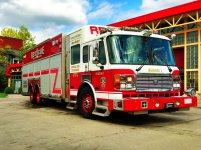
 www.facebook.com
www.facebook.com
BFD FIREBOAT
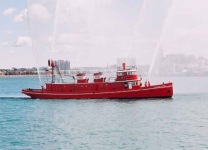

 www.youtube.com
www.youtube.com
The Buffalo Fire Department responds on average to 30,000 calls a year. General call types include fire, EMS, and hazardous materials incidents. The Buffalo Fire Department also has mutual aid plans with many local municipalities as well as Canadian fire agencies. For FY' 2005-2006, the BFD responded to 9,844 fire alarm activations, 1,483 confirmed working fires, and 23,543 EMS calls. The call volume has increased since. EMS calls are the most frequent calls the BFD respond to. In its current capacity, the Buffalo Fire Department acts as a first responder only. The BFD responds to mostly "life threatening" squad calls. Calls such as cardiac arrest, respiratory arrest/distress, chest pain, maternity, MVA's, medical alarms, etc. Most Buffalo firefighters are trained to the certified first responder level (CFR-D) while many others are Emergency Medical Technicians (EMT-B). There are a handful of Buffalo firefighters that are Intermediates (AEMT-I) and Paramedics (AEMT-P), however due to state protocols they can not render services higher than their agency level, which is Basic Life Support (BLS). The department does not transport patients to hospitals. This is done by Rural Metro Medical Services, a commercial service. Ambulances are dispatched by ADI (Ambulance Dispatch & Inspection), which work hand in hand with the fire department. Ambulances are dispatched to all alarms of fire as well as Level 1 Hazmat responses. Also the Erie County S.M.A.R.T. (Specialized Medical Assistance Response Team) aids the fire department on bus accident calls, MCI's, and Hazardous Materials Incidents. S.M.A.R.T. is staffed by ER doctors from the Erie County Medical Center which allows for quick MD access to patients. The Buffalo Fire Department has been looking again into providing their own ambulance service as well as implementing a revamped Squad company that would be an ALS flycar to assist the commercial ambulance service at peak times, but so far those talks are preliminary.
Hazmat calls are specialized responses handled by specific crews in the BFD. The crew of Engine 3, where Hazmat 1 is now quartered, mans the specialized truck on all Level 1 Hazmat Responses as well as simple spill calls. If Engine 3 is unavailable, the crew of Rescue 1 will respond with Hazmat 1. The Buffalo Fire Department also responds to Hazmat calls for the Town of Elma which is in the eastern suburbs. Elma, home to companies such as Motorola, Moog, signed a contract a couple of years ago with the City of Buffalo to provide Hazmat response in the event of an emergency.
Buffalo on average battles a structure fire once a day. The city is heavily laden with wooden balloon style framed buildings, multiple vacant warehouses and industrial buildings. In some cases these structures are just inches apart and since many are vacant they are very attractive for career arsonists and the wannabe firebug. The city has begun a process to demolish the over 10,000 vacant structures in an effort to detract arsons and keep firefighters safe. Also, the city in conjunction with several city departments has begun marking vacant structures with a uniformed system. Any structure that has a red square on it means an interior attack, if needed, is safe to enter. However structures with a red square with an X mean that the structure is unsafe and an interior attack is ill advised and only an exterior attack is warranted.
Buffalo's Arson Investigation Unit is one of the busiest arson squads in the country. Buffalo's Fire Marshals are armed firefighters invested with the powers of arrest. They respond to all structure fires when requested by the command officer as well as investigate small fires to assert if it was truly accidental or an arson was committed. Buffalo has a high rate of arsons due to the over 10,000 vacant structures within the city limits. They were quartered out of Engine 20 (Fireboat) on Ohio Street for years but recently have moved into Engine 2's quarters at Elmwood and Virginia allowing more room for staff as well as quarters for some of their apparatus. Also the Arson Squad has increased its arrests in the last few years.
The BFD has seen much restructuring within the ranks during the past decades with the population in the city dwindling from a high of 600,000 in the 1950s to less than 292,000 in 2006. Since 1994 alone, the Fire Department has disbanded six engine companies (10,13,16,18,24 & 30), four ladder companies (1,9,11 & 12), and a heavy rescue company (2).
However, the Fire Department still utilizes some of its closed firehouses. Engine 18 (Annex 18) on Fillmore Avenue is used by the Training Bureau as an offsite location. Engine 10 (Annex 10) on Ganson Street is used as a HazMat office, storage for reserve apparatus, as a well as a Haz Mat Training site. BFD is maintaining Annex 10; in the event of a rebirth on the waterfront it still holds an ideal location for a firehouse. Engine 24 on Leroy Avenue has been heavily vandalized since it was closed as an active firehouse. However it is utilized as a storage facility for the various support trailers as well as home of the department's spare Rescue, old Rescue 1. B-56's old SUV is quartered along with the old Shop Van. No more firehouse/company closings are expected for the foreseeable future. Through all the turmoil, they have still lived up to their motto "Ut Vivant Alii" ("So others may live").

Buffalo Fire Department
Motto: Ut Vivant Alii Established 07/01/1880 Staffing Career Stre
 en-academic.com
en-academic.com
BFD RESPONDING
BFD RESCUE 1

Buffalo Fire Dept. Rescue Co. 1
 www.facebook.com
www.facebook.com
BFD FIREBOAT

Three years before Orville and Wilbur Wright made their historic flight at Kitty Hawk, Buffalo's fireboat, currently named the Edward M. Cotter, began her 100-plus years of service to the City of Buffalo and it's fire department.
Built and commissioned during an era when Buffalo's waterfront and port were booming, the Cotter has been an invaluable asset of fire protection for the numerous warehouses, grain elevators and other facilities that line Buffalo's shores. Many of these structures pose unique challenges for firefighters and would be difficult, if not impossible, to reach using conventional land equipment. With her pumping capacity equal to that of 11 firetrucks, her importance is immeasurable.
In addition to her extraordinary firefighting capabilities, the Cotter serves another critical role as the city's sole ice-breaking resource. By breaking up ice jams in the Buffalo River, the water and ice in its upstream tributaries can flow freely, helping to prevent flooding - not only in Buffalo, but in neighboring communities as well.
In 1996, the Edward M. Cotter was designated a National Historic Landmark.
As the world's oldest working fireboat, she has borne three names, survived a devastating explosion and, as she proudly begins her second century of service, stands ready to protect our vessels and shorelines for many more years to come.
Built and commissioned during an era when Buffalo's waterfront and port were booming, the Cotter has been an invaluable asset of fire protection for the numerous warehouses, grain elevators and other facilities that line Buffalo's shores. Many of these structures pose unique challenges for firefighters and would be difficult, if not impossible, to reach using conventional land equipment. With her pumping capacity equal to that of 11 firetrucks, her importance is immeasurable.
In addition to her extraordinary firefighting capabilities, the Cotter serves another critical role as the city's sole ice-breaking resource. By breaking up ice jams in the Buffalo River, the water and ice in its upstream tributaries can flow freely, helping to prevent flooding - not only in Buffalo, but in neighboring communities as well.
In 1996, the Edward M. Cotter was designated a National Historic Landmark.
As the world's oldest working fireboat, she has borne three names, survived a devastating explosion and, as she proudly begins her second century of service, stands ready to protect our vessels and shorelines for many more years to come.
E_M_Cotter/home page
The official website of the Bufflo Fire Department's historic fireboat, the Edward M. Cotter. Three years before Orville and Wilbur Wright made their historic flight at Kitty, Hawk, Buffalo's fireboat, currently named the Edwqrd M. Cotter, began her 100-plus years of service to the City of...
www.emcotter.com

The Worlds Oldest Fireboat 122 Years Old Still In Use In 2022
The Worlds Oldest Fireboat 122 Years Old Still In Use In 2022 Filmed on 6/10/18 in Dunkirk NY. Edward M. Cotter is a fireboat in use by the Buffalo Fire De...



